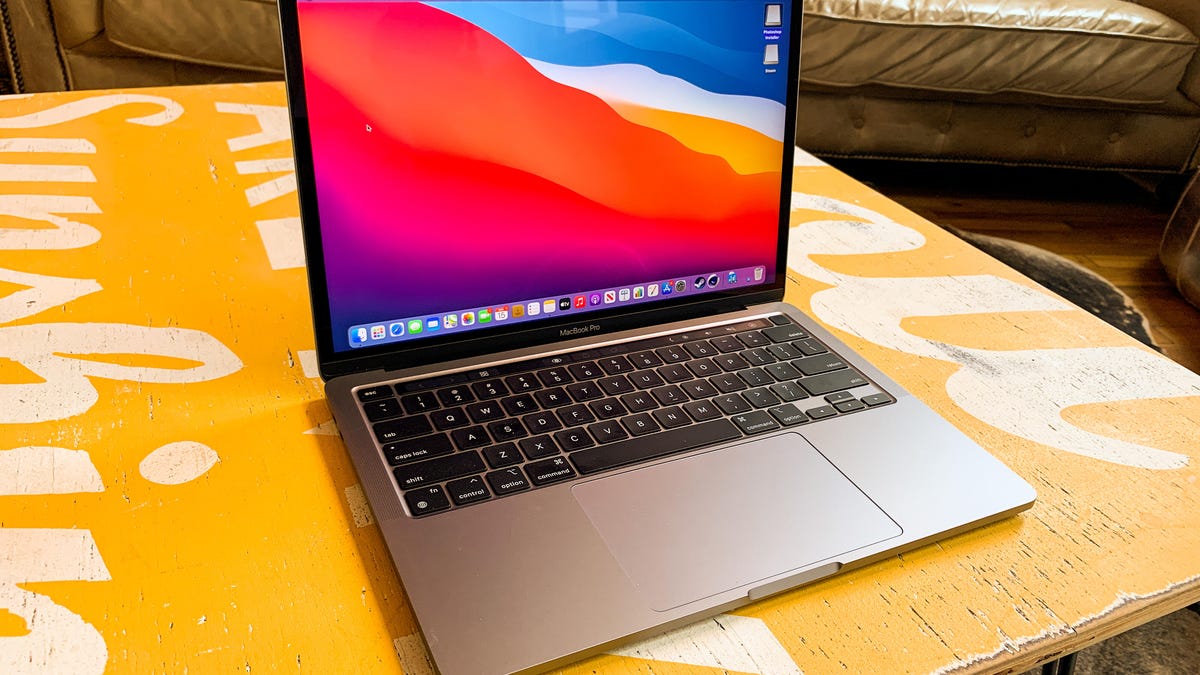Lightroom support tailors Apple M1 Macs for photographers
Adobe releases a version of its popular photo-editing software especially adapted for use on Apple's new processors.

The new M1-based MacBooks look the same as Intel-based siblings -- for now.
Adobe on Tuesday released a version of its popular Lightroom photo editing program adapted to Apple's new M1 Macs, a key addition to the catalog of software needed to make the recently introduced machines more useful. The Lightroom updates also support Apple's new ProRaw format for photo enthusiasts who want more editing control over shots taken with the iPhone 12 Pro.
Lightroom, a streamlined version of the full-featured Lightroom Classic, has been rebuilt to take advantage of the power of Apple's M1 processors. Apple promises such new, "native" software versions run faster and drain batteries more slowly, and early M1 Mac reviews have bolstered Apple's claims.
Unlike Lightroom Classic, Lightroom stores photo files in the cloud to allow for better synchronization with mobile devices. Lightroom Classic, as well as Adobe's Photoshop, now will run on M1 Macs through Apple's Rosetta translation software, Adobe said. Native versions of Lightroom Classic and Photoshop for M1 Macs are expected in 2021.
The introduction of Lightroom for M1 Macs is an important step for photographers considering whether to buy Macs with the M1 processors or stick with earlier machines based on Intel chips. Apple promises the new MacBook Airs and MacBook Pros benefit from better battery life and performance. Those benefits will only be fully realized with native versions of the most widely used software, like Lightroom, Photoshop and Microsoft Office.
Josh Haftel, Adobe's director of project management, said Lightroom performs well on M1 Macs both natively and via Apple's Rosetta translation software, which lets software originally written for Intel-based Macs run on M1 Macs. "Running Lightroom on the desktop in native mode is super fast," he said. "Lightroom Classic, even emulated under Rosetta, is really snappy."
Adobe also released on Tuesday a version of Lightroom for Windows laptops that use Qualcomm processors, which along with Apple's M1 is a member of the Arm chip family. Those machines have boasted longer battery life than mainstream Intel-based Windows laptops but have suffered from lukewarm performance.
Lightroom support for Apple ProRaw photos
With the new versions of Lightroom, Adobe is supporting another new Apple technology, the ProRaw photo format found iniPhone 12 Pro smartphones. ProRaw, which Apple still is testing in the latest iOS 14 beta version, is designed to offer photo enthusiasts more editing control over their photos than is possible with conventional JPEG or HEIC files.
Specifically, Adobe has calibrated its software so attributes like color and contrast look good in ProRaw images, Haftel said. Later Lightroom updates will offer an option to match Apple's own assessments of those properties and take ProRaw photos with Lightroom, he added.
On iPhone iOS 14, you also can add Lightroom widgets to your home screen to get quick access to actions like taking photos and exploring other Lightroom photographers' editing choices.
Why take ProRaw photos?
Most of the time phones take photos, they process the photo data from a camera's image sensor to create a conventional, convenient JPEG or HEIC image. Photo enthusiasts, though, often prefer the "raw" image sensor data, which lets them make their own choices about photo qualities like exposure, color balance, sharpening and noise reduction.
ProRaw blends the raw ethos with another digital photography technology, computational photography, processing steps designed to overcome the shortcomings of tiny smartphone cameras. When an iPhone creates a JPEG, HEIC or ProRaw image, it combines multiple frames into one photograph. But ProRaw puts major decisions in the photographer's hands when editing in Lightroom, Photoshop or other software.
Although ProRaw images "are more rare than raw," Haftel said he likes ProRaw's editing flexibility when it comes to exposure, color and dynamic range. "My estimation is that for almost everyone, ProRaw is a great option to use."
You'll need an iPhone 12 Pro to take ProRaw photos. But all versions of Lightroom -- those for iOS, Android, Windows, ChromeOS, M1 and Intel Macs, and the web -- can handle ProRaw photos.

